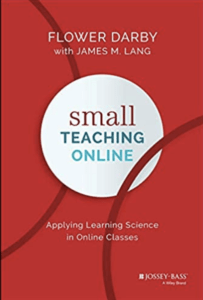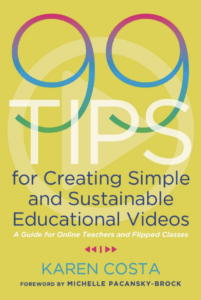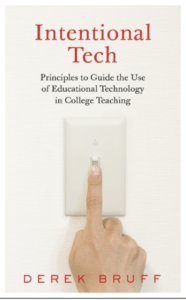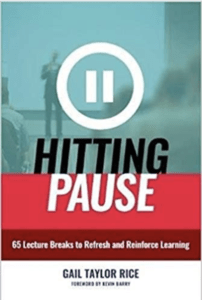CTL Recommends: Practical Books on Remote Teaching and Active Learning

Faculty across the country have been challenged to completely change their approach to teaching this Spring as we all move from face-to-face courses to remote teaching environments. In this brief series of posts, CTL faculty recommend books about teaching, learning, and pedagogy that make good resources for faculty during this disruption to traditional courses.
 Small Teaching Online: Applying Learning Science in Online Courses, Flower Darby with James Lang, Jossey-Bass, 2019
Small Teaching Online: Applying Learning Science in Online Courses, Flower Darby with James Lang, Jossey-Bass, 2019
Darby and Lang argue that by making small, meaningful tweaks to teaching strategies can yield significant increases in student learning and engagement online. Like its predecessor, Lang’s Small Teaching: Everyday Lessons from the Science of Learning (a former CTL Book Group selection), Small Teaching Online draws on learning science and neuroscience to offer best practices and easily implementable strategies to set students up for success in a remote learning environment.
 99 Tips for Creating Simple and Sustainable Educational Videos, Karen Costa, Stylus, 2020
99 Tips for Creating Simple and Sustainable Educational Videos, Karen Costa, Stylus, 2020
Based on extensive research into effective online teaching strategies, Costa provides short digestible tips for ways to create good videos that support your learning objectives and engage students. She covers everything from planning videos in alignment with learning objectives, guiding learning theories for this work, production and presentation strategies (for example, forget Hollywood!), and making videos accessible.
 Intentional Tech: Principles to Guide the Use of Educational Technology in College Teaching, Derek Bruff, West Virginia University Press, 2019
Intentional Tech: Principles to Guide the Use of Educational Technology in College Teaching, Derek Bruff, West Virginia University Press, 2019
In this book, Bruff shares research-based principles for determining which technologies can best help students achieve course learning objectives. Bruff’s principles ask the reader to assess the purpose for using a technology as related to student learning, thinking about, for example, technologies to help student “tell” what they know, practice new learning, deep dive into one aspect f there learning, etc.
 Hitting Pause: 65 Lecture Breaks to Refresh and Reinforce Learning, Gale Taylor Rice, Stylus, 2017
Hitting Pause: 65 Lecture Breaks to Refresh and Reinforce Learning, Gale Taylor Rice, Stylus, 2017
Grounded in the neuroscience of learning, in this easily searchable book, you’ll find strategies for checking in on students’ learning before, during, and after lectures, in-person or online. Good “learning pauses” provide an opportunity to let students think about and test out new ideas, practice skills, and develop questions to deepen their learning. Pedagogically, adding in specific pause points reminds us to break up content into shorter, digestible chunks with time for students to regularly engage the material and actively creating their own learning.




